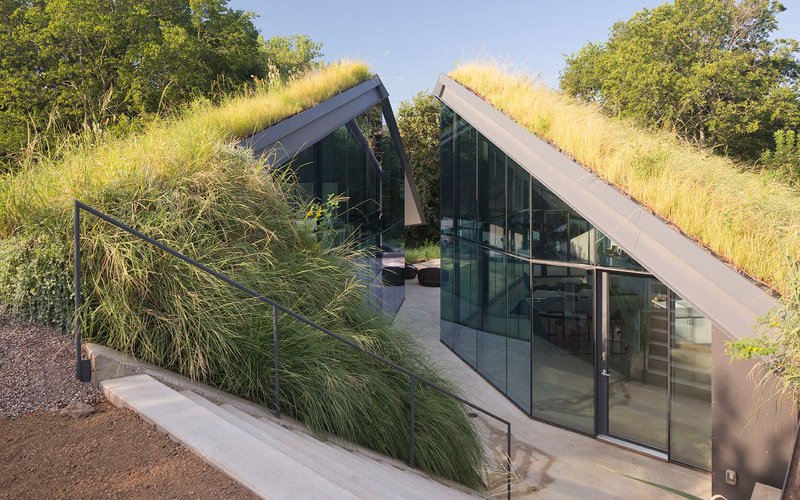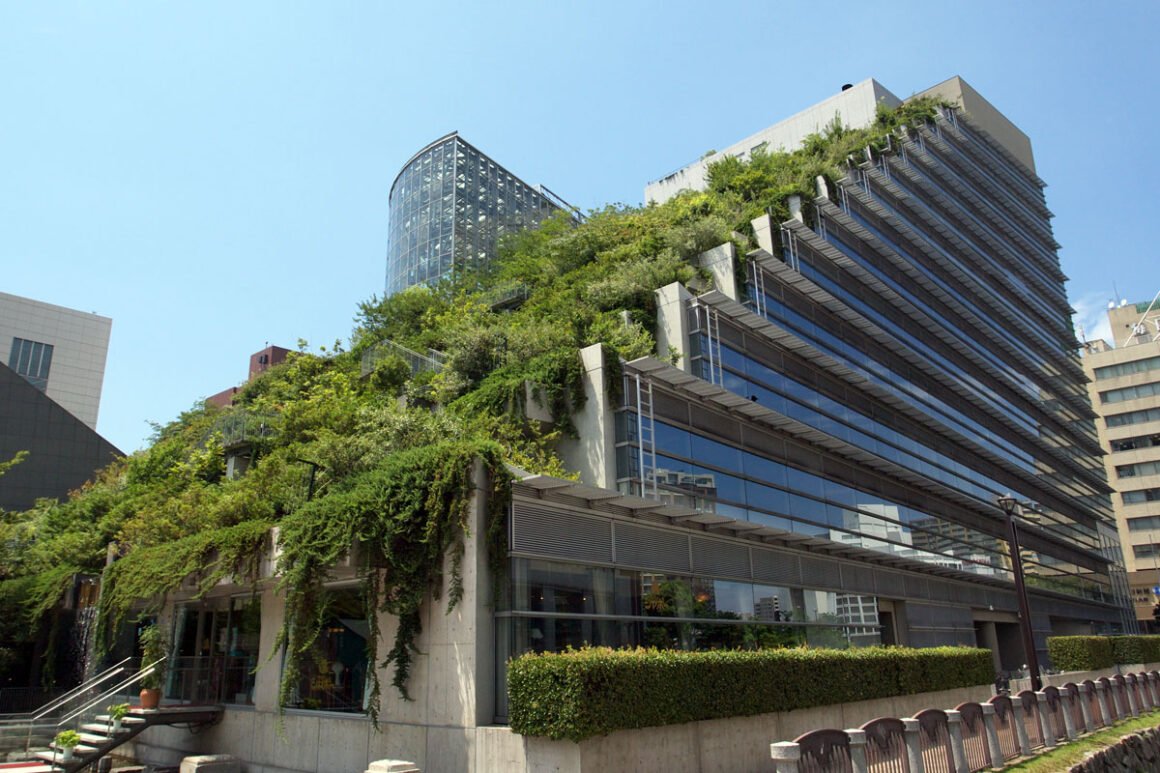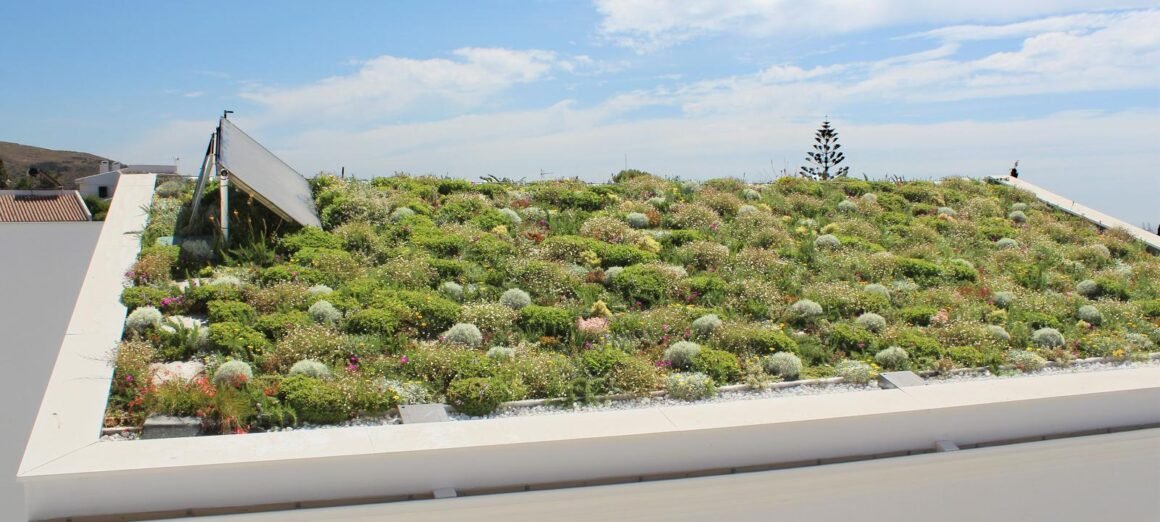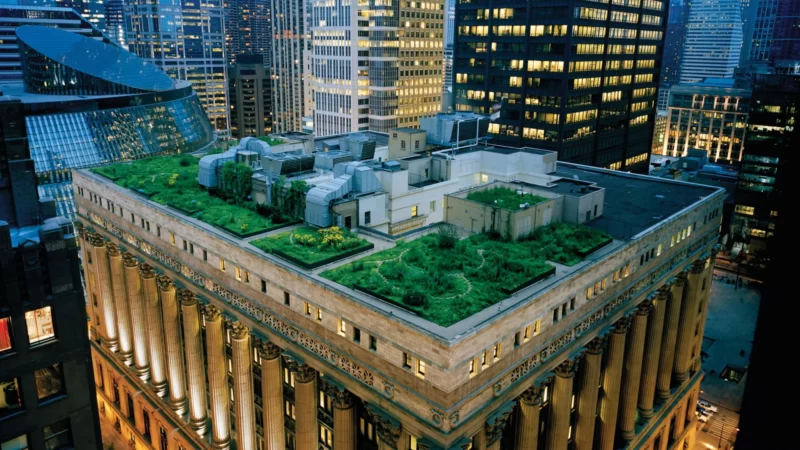Roofs typically account for around 20-25% of a building’s total area, yet these spaces are often underutilised. The vast potential of these overlooked spaces lies in their ability to transform from traditional roof surfaces into vibrant, life-giving green oases.
On top of our cities lies the key to the future of urban design. Green roofs make up an important part of a growing effort to meet the challenges of climate change and ensure greener and more liveable cities. As urban areas become denser and face the mounting threats of climate change, innovative solutions in future urban design are essential. The sky, it seems, holds one of the most promising answers.
Green roofs are now on the global agenda and play a pivotal role in shaping the future of sustainable cities. Here are some compelling reasons why green roofs are at the forefront of urban design’s future.
Green Roofs Reduce Urban Temperatures
Across the world, cities are experiencing rising temperatures, often as much as 5°C higher than surrounding areas. This phenomenon is known as the Urban Heat Island Effect. It occurs when cities replace natural land cover with heat-absorbing surfaces such as pavement and buildings.
Unlike reflective surfaces like snow or sand, which have a high albedo effect and can reflect sunlight, dark surfaces like buildings have low albedo and absorb heat. As these surfaces retain warmth, urban heat islands emerge throughout the city.

Green roofs offer a solution to mitigate the Urban Heat Island Effect by transforming heat-absorbing surfaces into cooling, vegetation-covered roofs. They help lower city temperatures in several ways: First, they provide shade and protect buildings from direct sunlight and solar radiation. Second, through photosynthesis, they absorb water and convert carbon dioxide into oxygen. Third, they act as wind shields, further cooling the environment. Additionally, green roofs protect buildings from extreme temperature changes, reducing indoor temperatures during the scorching summer months and enhancing indoor comfort.
Green Roofs Manage Rainwater
The challenges of flooding, water quality, stormwater runoff, and damage to buildings and ecosystems in cities are becoming increasingly pressing. With predictions of more heavy rainfall in the future, addressing the management of rainwater is paramount for urban sustainability.
One major challenge in cities is the prevalence of impermeable surfaces like roads, sidewalks, and plazas, which prevent rain from being absorbed into the ground. Rooftops often contribute to this issue, as rainfall is typically directed to gutters and then directly to the sewer system.

Green roofs offer a solution by acting as a rainwater catchment system, absorbing up to 80% of the annual rainfall and reducing the burden on the city’s sewer system. During heavy rain, green roofs delay the flow of water to the sewers, ensuring that the rainwater only enters the system when there is sufficient capacity, thereby preventing flooding. Additionally, the rainwater catchment system nourishes the plants, often eliminating the need for irrigation systems.
Green Roofs Enhance Quality of Life
Unexploited potential abounds in urban areas, with thousands of square meters of unused space. By utilizing rooftops, we not only benefit from the environmental advantages but also create green oases that enhance the quality of life.
Transforming rooftops into recreational spaces, such as green parks, playgrounds, and vegetable gardens, can elevate city living standards. These spaces foster a sense of community, promote social interactions, and introduce beauty to urban environments, enhancing the overall quality of city life.
Economic Benefits of Green Roofs
While the installation of green roofs may involve higher upfront costs than traditional roofing, they offer numerous economic benefits. Green roofs are energy-efficient, reducing the need for air conditioning in summer and providing insulation during winter, ultimately lowering energy expenses.
Studies demonstrate that green roofs may increase property values, particularly in areas with limited green spaces.
Most importantly, green roofs can significantly extend the lifespan of a roof by shielding roofing materials from ultraviolet radiation and extreme temperatures. In the long run, this reduces maintenance or replacement costs. It is estimated that a well-maintained green roof can double the life of a roof, making them a wise economic investment.
Green roof systems, often referred to as “living roofs,” represent a transformative approach to urban design. These innovative installations not only enhance the aesthetic appeal of buildings but also bring a plethora of environmental, economic, and social advantages. As a manifestation of sustainable architecture, green roofs have gained traction in various parts of the world.
Key Components of Green Roof Systems
A green roof system is more than just a layer of plants on top of a building. It comprises several critical components, including:
- High-Quality Waterproofing: The foundation of any green roof is a robust waterproofing system that ensures no water leaks into the structure below.
- Root Repellent System: To protect the building from potential damage, a root repellent system is installed to prevent the roots of the plants from penetrating the waterproofing layer.
- Drainage System: An efficient drainage system is vital to manage excess water and prevent waterlogged soil. This system helps in maintaining the right moisture levels for the plants.
- Filter Cloth: A filter cloth separates the growing medium from the drainage system, allowing water to pass through while retaining the soil.
- Lightweight Growing Medium: The growing medium is specially designed to be lightweight, providing a suitable environment for plant growth while not adding excessive weight to the structure.
- Plants: The choice of plants is a crucial element, and these can be chosen based on factors like climate, aesthetics, and maintenance requirements.
Green roof systems can be modular or loose-laid, with the former offering pre-made grids of the necessary components and the latter allowing each component to be installed separately.

Public Benefits of Green Roof Systems
- Aesthetic Improvements: Green roofs are an easy way to enhance the beauty of the urban environment and increase investment opportunities.
- Waste Diversion: They contribute to landfill diversion by prolonging the life of waterproofing membranes, using recycled materials in the growing medium, and extending the service life of heating and HVAC systems.
- Stormwater Management: Green roofs absorb and store rainwater, releasing it through transpiration and evaporation. This reduces the amount of stormwater runoff, alleviating stress on sewer systems during peak flow periods.
- Moderation of Urban Heat Island Effect: By cooling the environment during hot months, green roofs mitigate the Urban Heat Island effect, reducing the distribution of dust, particulate matter, and smog in the city.
- Improved Air Quality: Green roofs capture airborne pollutants and filter noxious gases, reducing demand on power plants and decreasing CO2 emissions.
- New Amenity Spaces: They increase amenity and green space, serving various functions such as community gardens, commercial spaces, and recreational areas.
Private Benefits of Green Roof Systems
- Energy Efficiency: Green roofs provide superior insulation, reducing energy consumption for temperature control within the building.
- Increased Roofing Membrane Durability: They protect waterproofing membranes from extreme temperature fluctuations and ultraviolet radiation.
- Fire Retardation: Green roofs have lower burning heat loads compared to conventional roofs.
- Reduction of Electromagnetic Radiation: They can reduce electromagnetic radiation penetration significantly.
- Noise Reduction: Green roofs have excellent noise attenuation, making them ideal for reducing outdoor noise.
- Marketing and Increased Property Value: Green roofs enhance marketability, symbolizing a commitment to sustainability and increasing property value.
Design-Specific Benefits
- Increased Biodiversity: Green roofs sustain various plants and wildlife, enhancing ecosystems, the economy, and community well-being.
- Improved Health and Well-being: Reduced pollution and increased water quality on green roofs can lead to lower healthcare demands and a sense of community.
- Urban Agriculture: Green roofs offer opportunities for urban agriculture projects, reducing a community’s carbon footprint and improving nutrition.
- Educational Opportunities: Educational institutions can use green roofs to teach students and the public about biology, green roof technology, and their multifaceted benefits.
Green roof systems are more than just a green facelift for buildings; they represent a commitment to a sustainable, healthier, and more beautiful urban environment. With numerous public, private, and design-based benefits, green roof systems are gaining traction as an essential element of future-oriented urban development.











